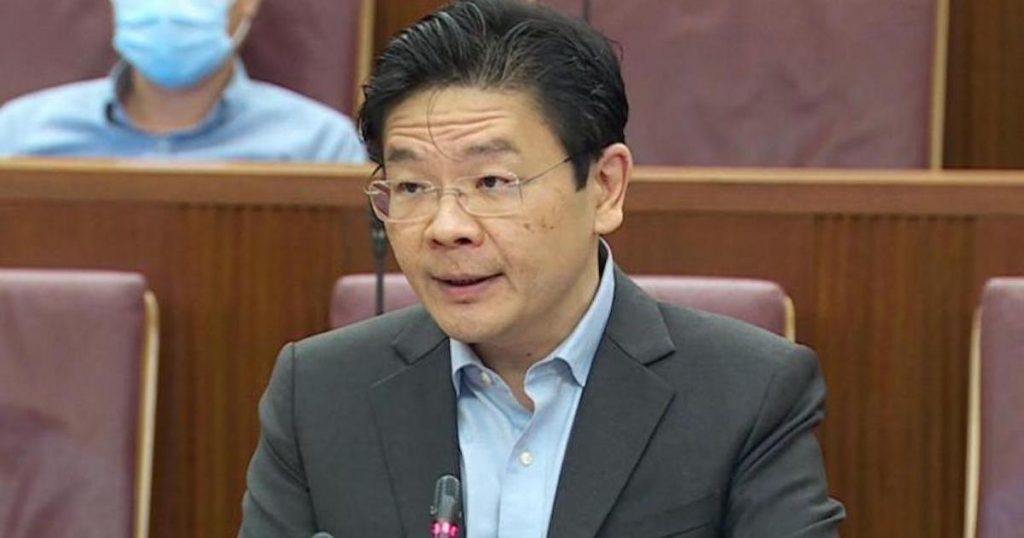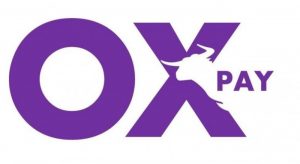1. Targeted help for hard-hit sectors
a. Mr Lawrence Wong during his Budget speech today (February 18) that he has set aside S$500 million for a Jobs and Business Support Package.
b. As part of the Package, a Small Business Recovery Grant will be provided for small and medium-sized enterprises (SMEs) that have been most affected by Covid-19 restrictions over the past year, like those in the food and beverage, retail, tourism and hospitality sectors.
c. SMEs in eligible sectors will receive a payout of S$1,000 per local employee, up to a cap to S$10,000 per firm.
d. Local sole proprietors and partnerships in eligible sectors, as well as hawkers, market and coffee shop stall holders that do not hire local employees and are licensed by the Singapore Food Agency, will also receive a S$1,000 payout.
2. Covid-19 Recovery Grant and Jobs Growth Incentive to be extended
a. Workers who continue to face income loss due to Covid-19 can apply for the Covid-19 Recovery Grant, which has been extended to the end of the year.
b. The Jobs Growth Incentive will also be extended by six months to September this year, with stepped-down support rates reflecting the improved labour market conditions.
c. The extension will cover those who face greater difficulty finding jobs, such as mature workers who have not been employed for six months or more, people with disabilities and ex-offenders.
3. Loan programmes for businesses and domestic construction sector to be extended
a. The spike in the cost of materials and electricity has led to cash-flow concerns for businesses.
b. To support companies with their cash-flow needs, the Temporary Bridging Loan Programme and the enhanced Trade Loan Scheme will be extended with revised parameters for another six months from April 1 to September 30 this year.
c. For the domestic construction sector, access to project loans will also be extended for another year, from April 1 this year to March 31 next year. This is on top of the foreign worker levy rebates that construction firms are currently receiving.
4. S$200 million to build digital capabilities for businesses and workers
a. An additional S$200 million will be set aside over the next few years to enhance schemes that build digital capabilities in businesses and workers.
b. These include the Grow Digital scheme, which helps firms to better leverage digital platforms to reach international markets, and the TechSkills Accelerator, which aims to develop a skilled information and communication technology workforce for Singapore’s digital economy.
5. S$600 million to help firms increase productivity
a. Around $600 million will be set aside to expand the range of available solutions under the Productivity Solutions Grant and push for greater take-up of productivity solutions by SMEs.
b. The scheme supports companies in implementing digital and automation solutions.
c. It is estimated to support more than 100,000 productivity projects over the next four years, more than double the number of projects supported since the scheme began.
6. Global programmes to help firms scale up overseas
a. More programmes will be introduced to help local firms scale up in overseas markets. A new initiative called Singapore Global Enterprises will provide bespoke assistance tailored to the needs of promising local firms, in areas like innovation, internationalisation and the fostering of partnerships with other firms.
b. A new Singapore Global Executive Programme will also help firms to attract and nurture their next generation of leaders through industry and overseas attachments, mentorships and peer support networks.
7. More help for companies’ financing needs
a. The Merger and Acquisitions loan programme, which supports firms to grow and expand through mergers and acquisitions, will be expanded to include domestic merger and acquisition activities from April 1 this year, to March 31, 2026.
b. Mr Wong says he will maintain the enhanced 70 per cent risk-share under the Trade Loan initiative for enterprises venturing into more nascent markets like Bangladesh or Brazil. This will help to encourage firms to seek untapped opportunities in those markets.
c. The Trade Loan supports Singapore-based firms in their trade financing needs, which include the financing of short-term import, export and guarantee needs.
8. Skills development in companies through enhancing the SkillsFuture Enterprise Credit scheme
a. Employers are also supported in training their staff through the SkillsFuture Enterprise Credit scheme. Today, only employers that have had at least three local staff and contributed at least S$750 of Skills Development Levy over a qualifying period are eligible for this credit, which tend to be larger firms.
b. To better support smaller enterprises, a waiver of the Skills Development Levy requirement will be granted, for the qualifying period of Jan 1, 2021 to Dec 31, 2021. This is estimated to double the number of eligible employers from 40,000 now to 80,000. The deadline to claim the credit will be extended by a year to June 30, 2024.
9. Minimum qualifying salary for S Pass and Employment Pass applicants raised, Tier 1 levy to be progressively raised as well
a. From September this year, the minimum qualifying salary for new Employment Pass (EP) applicants will be raised from the current S$4,500 to S$5,000.
b. For the financial services sector, which has higher salary norms, this will be raised from the current S$5,000 to S$5,500.
c. This is to ensure that incoming EP holders are comparable in quality to the top one-third of the local professional, managerial, executive and technical (PMET) workforce.
d. The qualifying salaries for older EP applicants, which increase progressively with age, will also be raised in tandem.
e. For renewal of applications, these changes will apply from September next year to give businesses time to adjust.
f. Besides the salary, the Government will also refine how EP applications are assessed to improve the complementarity and diversity of the foreign workforce, and increase certainty and transparency for firms.
g. Additionally, the minimum qualifying salary for new S Pass applicants will also be raised from the current S$2,500 to S$3,000 in September this year.
h. For the financial services sector, a higher minimum qualifying salary of S$3,500 will be introduced.
i. The qualifying salaries for older S Pass holders will also be raised in tandem. The aim is for S Pass holders to be comparable in quality to the top one-third of local associate professionals and technicians, said Mr Wong.
j. Thereafter, the minimum qualifying salary for new S Pass applicants will be raised in September next year, and again in September 2025, with specific salary values to be announced closer to the implementation date based on the local wages then.
k. For renewal applications, the changes will apply a year later, just as with EP holders.
l. To better manage the flow of S Pass holders, the Tier 1 levy will also be progressively raised from the current S$330 to S$650 by 2025.
10. Businesses to get support to cope with rising carbon tax
a. Singapore’s new net-zero ambitions will require a higher carbon tax. This will kick in from 2024.
b. The carbon tax will be raised to S$25 per tonne in 2024 and 2025, and S$45 per tonne in 2026 and 2027 with a view to reaching S$50 to S$80 per tonne by 2030.
c. The current tax of S$5 per tonne of emissions will remain unchanged until 2023, and specific increases will be announced ahead of time.
d. There will not be an additional carbon tax on the use of petrol, diesel and compressed natural gas, as these already have fuel excise duties to encourage moderation.
e. Mr Wong said there will be a transition framework implemented to help firms in emissions-intensive and trade-exposed sectors to manage the near-term impact to their competitiveness from the increased carbon taxes.
f. Similar frameworks are found in other countries with carbon taxes. They provide companies with certain allowances for a share of their emissions, which helps mitigate the higher business costs while still encouraging decarbonisation.
g. Businesses will be allowed to use high-quality international carbon credits to offset up to five per cent of their taxable emissions, in lieu of paying carbon tax, from 2024.
h. There will also be more support for companies to invest in energy-efficient equipment and decarbonisation solutions.
11. Gov’t to co-fund progressive wage increases for lower-wage workers under new scheme
a. Over the next two years, the Government will implement several changes to uplift lower-wage workers.
b. Among other things, the Progressive Wage Model (PWM) will be extended to the retail, food services and waste management sectors, as well as to cleaners, security officers, landscape workers, administrators and drivers across all sectors. This will result in higher labour costs for companies.
c. Mr Wong said the Government will introduce a Progressive Wage Credit Scheme (PWCS) to co-fund the wage increases of lower-wage workers from this year till 2026.
d. The co-funding rate will be set at 50 per cent for the first two years, for workers earning up to S$2,500. This will be tapered down to 30 per cent in the following two years and 15 per cent in 2026.
e. Support will also be provided for workers earning above S$2,500 and up to S$3,000, at a lower co-funding ratio.
f. A PWCS fund will be set up and given a S$2 billion injection this year. He said the push to uplift workers is part of the effort to renew and strengthen Singapore’s social compact for a post-pandemic world.
12. Enhancements to Workfare Income Supplement
a. The qualifying income cap for the Workfare Income Supplement will be raised from the current S$2,300 to S$2,500 per month, from Jan 1, 2023.
b. There will be a minimum income criterion for Workfare set at S$500 a month to encourage part-timers and casual workers to take up full-time work.
c. Workfare will also be extended to younger workers aged 30 to 34, with a maximum annual payout of S$2,100.
d. Maximum annual payouts for other age groups will be raised to S$3,000 for those aged 35 to 44; S$3,600 for those aged 45 to 59; and S$4,200 for those aged 60 and above.
e. People with disabilities will also get a maximum payout of S$4,200 annually, regardless of their age.
f. The enhanced Workfare scheme is expected to benefit more than half a million workers.
13. Employers to continue getting CPF offsets as contribution rates for older workers go up
a. Employer and employee CPF contribution rates increased for workers aged 55 to 70 this year, and employers have been given a one-year CPF Transition Offset equivalent to half the increase in employer contributions.
b. Mr Wong said the next step of the increase will take place in 2023 and employers will receive a similar offset.
c. The CPF Basic Retirement Sum (BRS) will also be increased by 3.5 per cent per year for the next five cohorts turning 55 from 2023 to 2027.
d. Those who are unable to set aside the BRS will not be required to top up their CPF, but those who do when they turn 55 in 2027 will get payouts of close to S$1,000 a month when they turn 65. These payouts will continue for the rest of their lives.
14. Singapore is exploring a Minimum Effective Tax Rate for large multinationals
a. In light of the BEPS 2.0 rules, Mr Wong said that the Government is exploring a top-up tax called the Minimum Effective Tax Rate.
b. This is to get the effective tax rate of affected multinational groups up to 15 per cent. The Inland Revenue Authority of Singapore (Iras) will study the design of the tax and consult the industry.
c. He added that the net impact of BEPS 2.0 on Singapore remains to be seen and that while the framework may reduce global tax competition, it has not reduced competition for investments.
d. “We will therefore need more time to study these issues thoroughly, and will announce changes in the corporate tax system when we are ready.”
15. GST to go up from 7% to 8% on 1 Jan 2023, and to 9% on 1 Jan 2024
a. The rate will go up from 7 per cent to 9 per cent in two phases. It will first increase from 7 per cent to 8 per cent on Jan 1, 2023 and then increase from 8 per cent to 9 per cent in 2024.
b. Singapore first announced a planned two percentage point GST increase from 7 per cent to 9 per cent in 2018, but it was delayed due to the Covid-19 pandemic.
c. On the timing of GST increase, Mr Wong said he had carefully considered the overall situation — the ongoing pandemic, the state of the economy and the outlook for inflation.
d. “Our revenue needs are pressing. But I also understand the concerns that Singaporeans have about the GST increase taking place at the same time as rising prices,” he said.
e. He added that S$40 million will be set aside under the Productivity Solutions Grant to help businesses adjust. They can apply for subsidised accounting and point-of-sale solutions.
This article was originally published in Vulcan Post.












